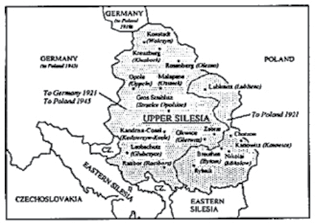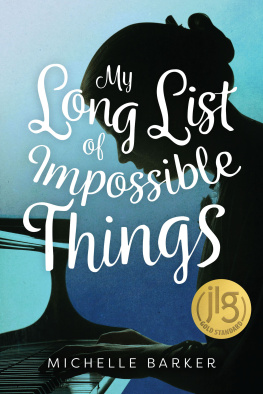Those Miraculous
Sunflower Seeds
A Riveting Story of Faith,
Hope and Love
Katja Kowalec
With
COLLEEN HARTLEY

Copyright 2016 by Katja Kowalec.
ISBN: Hardcover 978-1-4828-2597-8
Softcover 978-1-4828-2596-1
eBook 978-1-4828-2595-4
All rights reserved. No part of this book may be used or reproduced by any means, graphic, electronic, or mechanical, including photocopying, recording, taping or by any information storage retrieval system without the written permission of the author except in the case of brief quotations embodied in critical articles and reviews.
Because of the dynamic nature of the Internet, any web addresses or links contained in this book may have changed since publication and may no longer be valid. The views expressed in this work are solely those of the author and do not necessarily reflect the views of the publisher, and the publisher hereby disclaims any responsibility for them.
www.partridgepublishing.com/africa
Contents
List of Illustrations

Patczyna in winter by Lucas Mrzyglod 1925
The place where divided loyalties gave birth to love
Against all odds, it was my precious only daughter who gave me a constant sense of purpose in life.
I therefore dedicate this book to the memory of my beloved
Veronica (Ronnie) Kowalec
01/05/194607/02/2003
THOSE MIRACULOUS SUNFLOWER SEEDS
A riveting story of Faith, Hope and Love
Poland invaded September 1 st 1939
Tension is being felt all over Poland as Europe is on the brink of another Great War. Austria has already been devoured by the ideology of the leader of the emerging Third Reich and Poland stands in his way and he prepares to conquer Eastern Europe and Russia. The Silesian province of Poland and Germany where Katja was born of Polish and German parentage emerges as a breeding ground of German-Polish conflict after the First World War. Initially bewildered and embittered, Katjas account of her personal experiences during the confusion does not fail to include some humour in spite of being surrounded by the ongoing tragedy. Uncertainty amidst the prejudice between the two cultures give rise to further confusion as WW2 continues and communities are displaced.
The end of World War 2 - or i s it?
The Russian troops move into Poland from the East and Germans, Poles, Czechs and Ukrainians are among those brutally liberatedonly to find themselves falling victim to Stalins counterplan.
But miracles can and do ha ppen
A detailed account follows describing actual circumstances and events during the displacement of several populations and their return to their villages and homes after the so-called liberation in Eastern Europe.
Allied troops return home with their European war-brides, and the story continues into South Africa where this young Polish bride sees a future of love and opportunity in a land of diverse cultures foreign to her.
And then there are the unkept prom ises
From Cape Town to the spreading plains of the Orange Free State and from Johannesburg to the lush tropical Eastern Transvaal, this is an endearing account of a young Polish womans struggle and her timely success in her adopted country.
Katjas faith and tenacity is an inspiration to many as she encounters a certain Deja-vu associated with her early years in Poland, and the inner peace she receives as she approaches the threshold of her twilight years.
Sharon Cronj Publicist
UPPER SILESIA HISTORY AND GEOGRAPHICAL POSITION
Current Status: Split between the Provinces of Opole and Silesia in Poland. Population (1921}: 2, 073,663
Capital (1921}: Opole
Historical Dates:
1815 to 1919: Part of the Province of Silesia in the Kingdom of Prussia and the German Empire.

1919: Silesia divided into Upper and Lower Silesia after the treaty of Versailles at the end of World War I. A Plebiscite is ordered to be held in Upper Silesia in 1921 by the Interallied Commission, to allow the residents to determine if they wished to join Germany or Poland.
1921: The plebiscite is held, policed by French, British and Italian troops on March 2Ist. The results were 60% in favour of Germans, mostly in the west and 40% in favour of Poland, mostly in the east. The territory is eventually divided between Germany and Poland in the approximate area ethnic vision.

My thanks go to my late parents who lived through two world wars and other hardships. They encouraged me to highlight the complications caused by mixed marriages and how love and respect for individual cultures not only personally, but as nations that could rise above the need for war.
To Colleen whose dogged determination made the dormant promise of the book grow to be a reality. For twenty long years, including visits across the ocean, we spent our time together intermittently compiling information.
To Gilbert and Jolle my cousinssons of Uncle Lukas my fathers brotherwho assisted not only with copies of Uncle Lucas paintings, but information about the family.
To Father Christopher Neville, my Franciscan friend for his constant nagging to give it a go.
To the late Ala Sussens, an author in her own rightUntil we meet again my little sister
To Sharon Cronje my soul-mate and enthusiastic publicist and my dearest friends, Pat Schorn and Mieke Cochranefor all your support and the time you spent in making the production of this book possible.
And finally to my namesake Katja, Bruno, Jessica and Emma my dear little family and all those friends who believed in us and were an endless source of encouragement.
Katja Kowalec
PART ONE
Poland
1
The First Meeting
Spring seemed to have lost its way in 1939 as the winter snows clung tenaciously to the Silesian Landscape, creating a Christmas-like atmosphere as Easter approached in early A pril.
In the mining town of Hajduki in Upper Silesia, there was excitement in the air as people anticipated the Easter Holidaysthis, in spite of the gloomy tension that had prevailed in the country since the news of the annexation of Austria by Germany in March 1938. Anxiety had intensified as the greedy monster of the third Reich, his appetite whet by this tasty hors doeuvre of Austria, had sniffed the air scenting out a possible second and even third course. Poland and Czechoslovakia, up wind, provided irresistible temptations. By March 1939 Hitler had taken over all of Czechoslovakia. The Polish people felt uneasy and insecure. But none of this tension could dampen the high spirits of fifteen year old Katja as she hurried down Konipnicka Street towards the tram stop that Good Friday. She still wore her school uniform as her arrival from school had been only a few minutes before their departure for Beuthen. It had all been such a rush.
Is my suitcase ready Aunt Emma? she asked between mouthfuls of the sandwiches that Emma had prepared.
Of course, now just slow down child, you will give yourself indigestion. But she was eager to be off.
Hurrying towards the tram stop, her blonde, waist length braids swaying behind her, she turned back every now and then to encourage her companion. Emma, elderly and rotund, puffed and wheezed as she tried to keep up with her young charge.
Next page
















